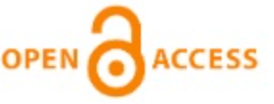Reflection on Accounting Histography: From Double Entry to Ethics, Conservatism, and Sustainability
DOI:
https://doi.org/10.33581/fnqs2m48Keywords:
critical history, antiquarian history, medieval, early modern, double entry, accounting, bookkeeping, indonesia lensAbstract
Economic historians argue that before 1800, double-entry bookkeeping was used primarily to manage debt and oversee distant agents, factors, and partners. Its role in measuring overall profit or wealth was limited, usually arising only when accountability to others was required. These conclusions, drawn from primary records interpreted within their broader business context, contrast sharply with traditional antiquarian narratives. The latter emphasized technical detail, relied on presentist and teleological assumptions, and neglected contextual or critical reflection. As a result, they focused on the “what” and “how” of bookkeeping while leaving the more fundamental question of “why” unexplored, thereby obscuring motivations and producing questionable assumptions that became accepted as fact. This narrow, Eurocentric framing shaped by influential figures such as Pacioli, Besta, and Yamey placed double-entry bookkeeping at the center of accounting progress while marginalizing earlier systems and overlooking social, political, and ethical dimensions. A broader review of the literature, however, reveals more complexity. Classical scholarship remains highly technical, critical approaches reinterpret accounting as both disciplinary and ethical, global studies demonstrate diverse and non-linear development paths, and Indonesian research emphasizes ethics, prudence, and sustainability, with scandals such as Jiwasraya and Garuda Indonesia underscoring the importance of governance and transparency.
Downloads
References
Anggara, A., Aryoko, E., & Fatchan, I. (2023). The application of true cost accounting in energy transition: The role of artificial intelligence, blockchain, and big data. Jurnal Akuntansi dan Keberlanjutan, 5(2), 145-160.
Antinori, C. (2004). La contabilità pratica prima di Luca Pacioli: Origine della Partita Doppia. De Computis, Revista Española de Historia de la Contabilidad, 1, 4–23.
Arifin, Z., & Rahmawati, D. (2021). Financial statement fraud: A case study of PT Asuransi Jiwasraya (Persero). Journal of Financial Crime Studies, 4(2), 88-89.
Arnold, J. H. (2021). What is Medieval History? Cambridge: Polity.
Baladouni, V. (1986). East India Company’s 1783 balance of accounts. Abacus, 22(2), 59–64.
Baladouni, V. (1990). An early attempt at balance sheet classification. Accounting Historians Journal, 17(1), 27–45.
Barzun, J., & Graff, F. H. (1977). The Modern Researcher (3rd ed.). New York: Harcourt Brace.
Besta, F. (1916). La Ragioneria (Vol. 3, 2nd ed.). Rome: Rirea.
Bettarini, F. (2021). The census. A census of private account books in Florence, 1211–1499. Available at: https://phaidra.cab.unipd.it/view/o:453620
Bisman, J. E. (2012). Surveying the landscape: The first 15 years of Accounting History as an international journal. Accounting History, 17(1), 5–34.
Chambers, R. J. (1980). The myths and the science of accounting. Accounting, Organizations and Society, 5(1), 167–180.
Ciambotti, M. (2009). La storia della ragioneria e la storia socio-politica. De Computis, Revista Española de Historia de la Contabilidad, 6(10), 131–156.
CNN Indonesia. (2019, June 28). OJK beri sanksi ke Garuda Indonesia dan direksi terkait laporan keuangan. Retrieved from CNN Indonesia: https://www.cnnindonesia.com/ekonomi/20190628152642-92-407777/ojk-beri-sanksi-ke-garuda-indonesia-dan-direksi-terkait-laporan-keuangan
Coronella, S., & Maran, L. (2024). The qualitative leaps of the accounting discipline in Italy between the nineteenth and twentieth century. Accounting History. https://doi.org/10.10323732241258517
De Roover, R. (1937). Aux origines d’une technique intellectuelle: la formation et l’expansion de la comptabilité à partie double. Annales d’Histoire Économique et Sociale, 9(44), 171–193.
De Roover, R. (1956). The development of accounting prior to Luca Pacioli according to the account books of medieval merchants. In A. C. Littleton & B. S. Yamey (Eds.), Studies in Accounting History (pp. 114–174). New York: Sweet & Maxwell.
De Roover, R. (1958). The story of the Alberti Company of Florence, 1302–1348, as revealed in its ledgers. Business History Review, 32(1), 14–59.
Edwards, J. R. (1985). The origins and evolution of the double account system: An example of accounting innovation. In T. Antoni (Ed.), Quarto Congresso Internazionale di Storia della Ragioneria 1985 (pp. 149–170). Pisa: ETS Editrice.
Edwards, J. R., Dean, G., & Clarke, F. (2009). Merchants’ accounts, performance assessment and decision making in mercantilist Britain. Accounting, Organizations and Society, 34(5), 551–570.
Funnell, W., & Robertson, J. (2013). Accounting by the First Public Company: The Pursuit of Supremacy. Abingdon: Routledge.
Goldthwaite, R. A. (2015). The practice and culture of accounting in Renaissance Florence. Enterprise & Society, 16(3), 611–647.
Goldthwaite, R. A. (2018). Performance of the Florentine economy, 1494–1512: Moneys and accountancy. Archivio Storico Italiano, 176(656), 245–273.
Goldthwaite, R. A., & Spallanzini, M. (2018). Censimento di libri contabili privati dei fiorentini 1200–1600. Available at: https://www.academia.edu/40196500
Hoskin, K. W., & Macve, R. H. (1986). Accounting and the examination: A genealogy of disciplinary power. Accounting, Organizations and Society, 11(2), 105–136.
Lane, F. C. (1944). Andrea Barbarigo: Merchant of Venice, 1418–1449. Baltimore: Johns Hopkins University Press.
Lane, F. C. (1977). Double entry bookkeeping and resident merchants. Journal of European Economic History, 6(1), 177–191.
Lemarchand, Y. (1994). Double entry versus charge and discharge accounting in eighteenth-century France. Accounting, Business & Financial History, 4(1), 119–145.
Martinelli, A. (1974). The Origination and Evolution of Double Entry Bookkeeping to 1440 (PhD dissertation). University of North Texas.
Matringe, N. (2016). Italian enterprise, the Lyon market and Europe in the 16th century. In M. Hengerer & D. Mollenhauer (Eds.), Beiträge zur Geschichte und Kultur Westeuropas (Vol. 2, pp. 143–173). München: OLMS.
Melis, F. (1950). Storia della Ragioneria. Bologna: Cesare Zuffi.
Merino, B. D. (1998). Critical theory and accounting history: Challenges and opportunities. Critical Perspectives on Accounting, 9(6), 603–616.
Miller, P., & Napier, C. (1993). Genealogies of calculation. Accounting, Organizations and Society, 18(7–8), 631–647.
Mukhametzyanov, R. Z., Nugaev, F. S., & Muhametzyanova, L. Z. (2017). History of accounting development. Journal of History Culture and Art Research, 6(4), 1227-1236. https://doi.org/10.7596/taksad.v6i4.1163
Napier, C. J. (1989). Research directions in accounting history. British Accounting Review, 21(3), 237–254.
Napier, C. J. (2006). Accounts of change: 30 years of historical accounting research. Accounting, Organizations and Society, 31(4–5), 445–507.
Napier, C. J. (2008). Historiography. In J. R. Edwards & S. P. Walker (Eds.), The Routledge Companion to Accounting History (pp. 30–49). London: Routledge.
Paris, D. (2016). The professionalization of accounting in England: From legitimacy to institutionalization. Accounting History Review, 26(3), 267–289. https://doi.org/10.1080/21552851.2016.1246002
Pacioli, L. (1494). Summa de Arithmetica, Geometria, Proportioni et Proportionalita. Venice: Paganino de’ Paganini.
Pramana, I., Fakhruddin, F., Pramono, H., & Hapsari, D. (2023). Accounting conservatism and the quality of financial reporting: Evidence from Indonesia. Asian Journal of Accounting Research, 14(2), 221–238.
Pramono, H., & Ugung, P. (2021). The role of personal values in ethical decision-making of public accountants in Indonesia. Jurnal Etika dan Profesi Akuntansi, 8(1), 12-25.
Reiter, B. (2006). The hermeneutic foundations of qualitative research. Qualitative Methods, 4(2), 18–24.
Sangster, A. (2025). Time to reboot accounting history: Evidence from scholarship on double entry. Accounting History Review, 35(1), 1–28. https://journals.sagepub.com/home/ach
Spraakman, G. (2015). Management Accounting at the Hudson’s Bay Company: From Quill Pen to Digitization. Bingley: Emerald Group.
Spraakman, G., & Wilkie, A. (2000). The development of management accounting at the Hudson’s Bay Company, 1670–1820. Accounting History, 5(1), 59–84.
Stoner, G. (2011). The perseverance of Pacioli’s goods inventory accounting system. Accounting History, 16(3), 313–329.
Tempo.co. (2020, January 15). Kasus Jiwasraya: Kejagung sebut potensi kerugian negara Rp 13,7 triliun. Retrieved from Tempo.co: https://nasional.tempo.co/read/1294933/kasus-jiwasraya-kejagung-sebut-potensi-kerugian-negara-rp-137-triliun
Vasconcelos, A., Sangster, A., & Rodrigues, L. L. (2022). Avoiding Whig interpretations in historical research: An illustrative case study. Accounting, Auditing & Accountability Journal, 35(6), 1402–1430.
Winjum, J. O. (1971). Accounting and the rise of capitalism: An accountant’s view. Journal of Accounting Research, 9(2), 333–350.
Yamey, B. S. (17). Luca Pacioli: The father of accounting? Accounting, Business & Financial History, 7(2), 143–151. https://doi.org/10.1080/095852097330870
Yamey, B. S. (1949). Scientific bookkeeping and the rise of capitalism. The Economic History Review, 1(2-3), 99-113. https://doi.org/10.2307/2591014
Yamey, B. S. (1955). Some topics in the history of financial accounting in England, 1500–1900. The Economic History Review, 7(2), 99-113. https://doi.org/10.2307/2591899
Yamey, B. S. (1962). The origins of double-entry bookkeeping: Some remarks. Accounting Review, 37(2), 262-272.
Yamey, B. S. (1977). Notes on double-entry bookkeeping and economic progress. Journal of European Economic History, 6(1), 99-113.
Downloads
Published
Issue
Section
License
Copyright (c) 2025 Zhurnal Belorusskogo Gosudarstvennogo Universiteta. Istoriya

This work is licensed under a Creative Commons Attribution-NonCommercial 4.0 International License.























